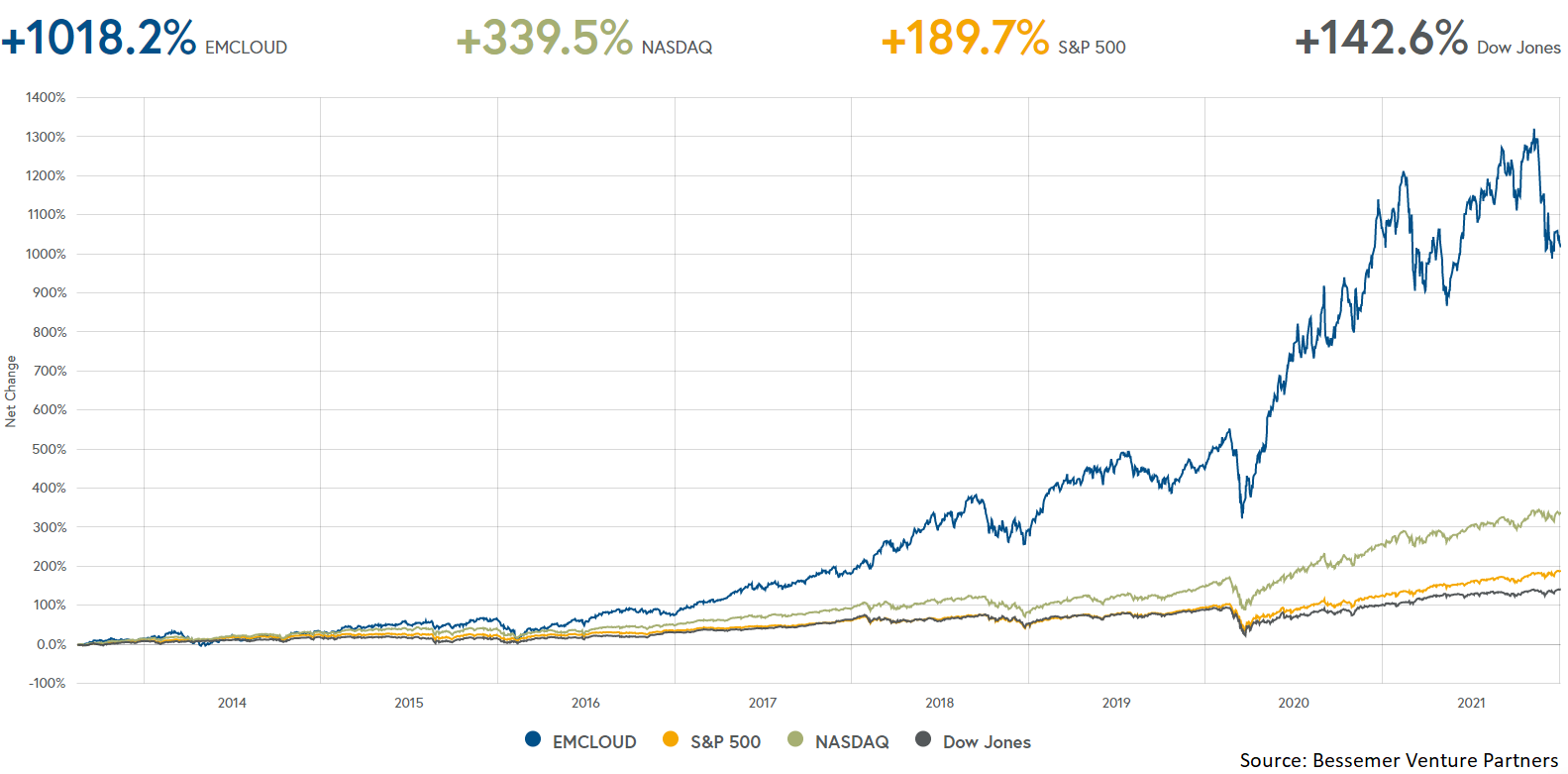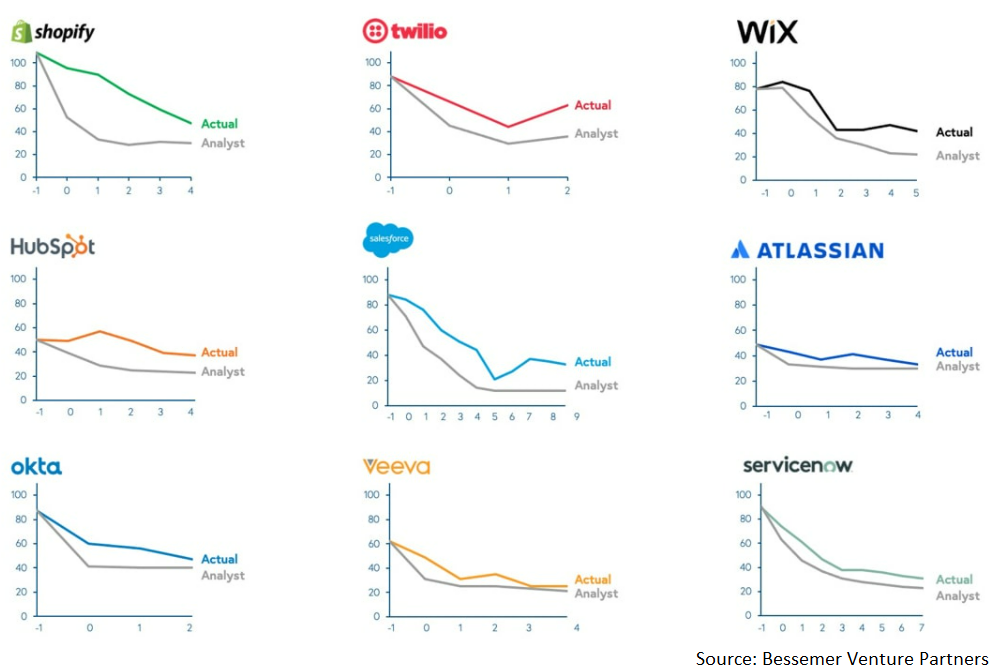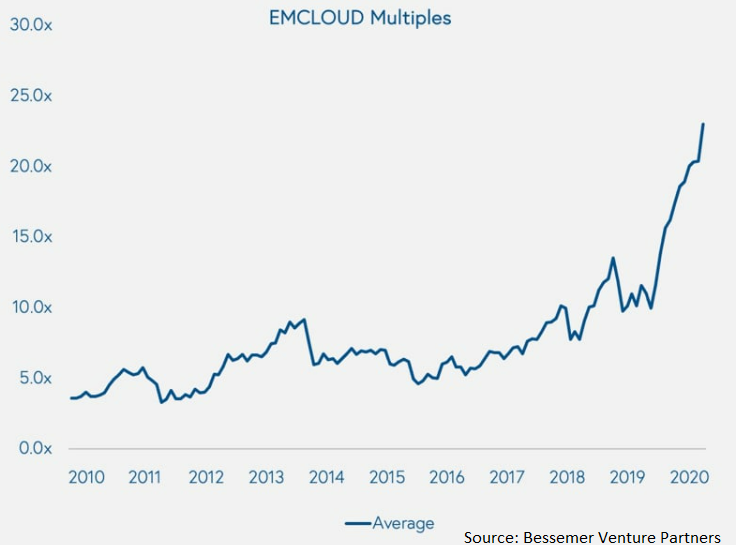Cloud intelligence is at the heart of modern technologies. What are the top cloud trends and how can investors position to benefit from these trends?
Cloud computing has become the most significant secular trend in the software and IT industry globally. Its impact and scalability are enormous, leading to high revenue growth for emerging cloud companies and established players. Cloud revolutionises the way we use technology in the sense that it streamlines and makes existing technology faster and more efficient. The simplicity of cloud solutions and the return on investment is really driving its adoption. The shift to subscription business models enforces lock-in mechanisms for customers and offers cloud providers stable recurring revenues. According to analyst projections, global spending on cloud services is expected to reach over USD482 billion in 2022, up from USD313 billion in 2020.
Cloud intelligence
Artificial intelligence is facilitated by cloud infrastructure for the harvesting, storing, and processing of mass quantities of data. Machine learning tools are assisting organisations in a range of industries in creating value from the information gathered through data processing, model training, and predictive analysis. Automation software such as UiPath are also key to helping organisations optimise and build automation quickly. The cloud takes center stage to enabling advanced digital solutions run smoothly and securely.
Cybersecurity
Cloud solutions are also helping to keep businesses and customers protected through cloud-based servers and secured access. For critical data, businesses increasingly use cloud-based disaster recovery back-ups on an external cloud server. The industry is moving closer to solutions-driven storage (data collection, processing, analytics), rather than just data storage. With security and privacy increasingly in focus, cloud technologies are progressively being incorporated in the growing field of blockchain technologies such as for decentralised storage architecture solutions, which are more resistant to data modifications.
Gaming and the metaverse
Virtual worlds of gaming, the metaverse, augmented reality (AR) or virtual reality (VR), are all enabled by cloud technologies which allow data to be shared securely and rapidly. With the gaming industry booming, disruptive innovations such as VR/AR enhanced games are introduced in the virtual world known as the metaverse. Real businesses are born on the metaverse and companies such as Roblox could be well positioned to benefit. Roblox, an online gaming platform famous for its metaverse interphase has a market capitalisation of close to USD55 billion. Interestingly, Roblox has launched an open cloud, to foster game creator’s productivity. The amount of dollars going into the metaverse is non-negligible with mega-cap tech names such as Nvidia, Microsoft, Alphabet and Meta (Facebook) investing meaningfully.
How to invest?
As cloud technologies most likely still have a long runway ahead, given its presence in every aspect of our life, it is essential to explore a variety of ways for investors to gain exposure, as with all emerging technologies it is extremely difficult to forecast the winners.
The two opportunities emerge:
1. Mega-Cap names
Some of the largest well established tech companies are also beneficiaries of cloud computing growth. These include Microsoft, Amazon, Alphabet, Salesforce, and Oracle.
Amazon’s Amazon Web Services (AWS) controls 32%, Microsoft Azure 21%, and Google Cloud 8% of the global market share for cloud infrastructure. They not only cater to individuals and businesses but also count governments as important customers. The growth rates of some of these cloud businesses have been strong. For example, in its most recent quarter, AWS saw cloud revenue growth of 39%, Azure saw 50% growth, and Google Cloud witnessed growth of 45%. These USD1 trillion plus market caps are more vulnerable to antitrust law or regulation that could hurt big tech. However, their earnings stability and profitability are high. As a result, they can continually re-invest in their business, make acquisitions, or return capital to shareholders via dividends or share buybacks.
2. Emerging Cloud Names
Emerging cloud names that have had success but are not well established yet, with potential for significant growth. However, some of these will likely see their technologies falling behind as they compete for market share and have less resources to fend off competition. Historically, these have been more volatile than the more established players that have more consistent earnings and healthy balanced sheets as tools for acquisitions, dividends or share buybacks. Many of the emerging cloud names are not yet profitable but have high growth potential.
The BVP Nasdaq Emerging Cloud Index includes companies involved in the cloud, ranging from web infrastructure, security, to gaming or fintech. Companies in the Index include digital transformation leaders such as Adobe, Docusign, Salesforce, and cybersecurity providers such as Crowdstrike, and Zscaler. The index also includes web infrastructure leaders such as Cloudfare, Snowflake and Datadog, and web development companies such as Atlassian, Wix, and Hubspot. Other names range from e-commerce (Shopify) and communications (Zoom) to fintech (Square, and PayPal).
The rapid growth and adoption of cloud computing has made the theme deliver well above average performances, compared to the main US indices.

The emerging cloud names tend to have something unique of their own, owing to their success. However, their growth is less predictable, and they are move vulnerable to stock market pullbacks. For instance, stocks of cloud names have suffered recently, along with growth stocks, as investors focus more on valuations in light or rising interest rates.

Nonetheless, investors continue to seek exposure to these names as cloud companies have done particularly well in the past – better than Wall Street expectations, as it is so difficult to make accurate predictions for disruptive companies, and as cloud adoption rates have been booming.
Valuation
Cloud names are not short of risks, with many of them frequently suffering sharp pullbacks. Typically, high-growth stocks trade at very high multiples and are not all profitable yet. For example, in 2020, cloud stocks benefited from pandemic lockdowns, which accelerated digitalisation of the economy. This was exacerbated by historically low interest rates and a lot of capital chasing too few investment opportunities.

Investors positioning in emerging cloud names also need the risk appetite and long time horizon that comes with higher volatility.
Conclusion
There is no question that cloud computing is transforming our economies, yet there are several angles to consider before investing. For investors with a very high risk appetite, emerging cloud stocks as a theme look promising. On the flipside, those stocks demand high valuations and could be particularly sensitive to economic conditions with the prospects of rising interest rates. As an alternative, mega-cap stocks of companies involved in the cloud are potentially attractive for a less risky proposition as historically they have provided more consistent profitability and earnings growth, which has made their stocks more stable.





